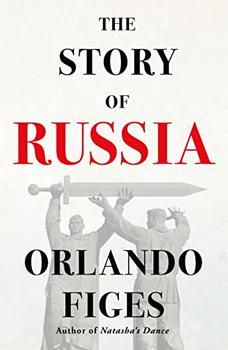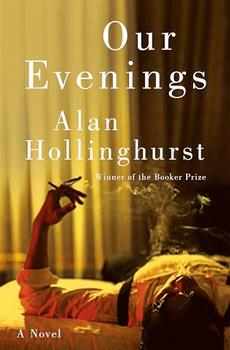Summary | Excerpt | Reviews | Beyond the Book | Readalikes | Genres & Themes | Author Bio

Moving south, we come next to the taiga forest zone, the largest coniferous forest in the world, stretching from the Baltic to the Pacific. It is made up of pine trees, spruce and larch, interspersed with marshes, lakes and gentle-running rivers, the fastest means of travel in this zone until the nineteenth century.
Pine forests give way to mixed woodlands and open wooded steppelands to the south of Moscow, where the rich black soil is in places up to several metres deep. This third band of Russia's land, known as the central agricultural zone, is wide at the western end, where it merges into the Hungarian plain, but narrows in the east, towards Siberia, where the taiga takes over. The fertile zone was secured by the Russians from the sixteenth century.
Finally, in the far south, we come to the Pontic steppe, the semi-arid grasslands and savannas running from the Black Sea's northern coastline in the west to the Caspian Sea and Kazakhstan in the east. The area was conquered by the Russians from the nomadic Turkic tribes only from the eighteenth century. It forms the religious fault line between Russia and the Muslim world.
The earliest recorded settlers in the lands that became known as Kievan Rus were the Slavs, although there were Finno-Ugric tribes, such as the Estonians, in the northern forest zones from the middle of the first millennium. According to the story told by most historians, the Slavs were forced to flee to the forests of the north by the Turkic tribes, whose military power gave them control of the grasslands further south. The Slavs spread out through the great primeval forests in small groups, clearing trees and burning their debris to sow crops in the ashen ground (a method known as slash and burn). Farming in the northern forest zone was arduous. A strong collectivism was essential to survive. Labour teams were needed to clear the trees, and to sow and harvest all the crops during the short growing season between the thaw and spring floods of April and the beginning of the winter freeze in October. The soil is poor, sandy, thin, on top of rock. Only rye, among the cereals, could be grown here, and the harvest yields were low. Yet the forests gave the peasants other means of livelihood: furs, honey, wax, fishing, carpentry.
The Slavs lived in settlements enclosed by wooden walls. Democratic in their character, they were governed by assemblies of the adult men (the Byzantines considered their democracy 'disorder and anarchy'). Masters of the axe, the Slavs were skilled in turning trees into buildings, longboats and canoes, meaning they were able to add fishing and trade along the rivers to their means of livelihood. Their numbers grew, forcing the Finno-Ugric tribes to retreat deeper into the forest. By the end of the first millennium, the Slavs had developed a durable, adaptive peasant culture, based on collectivism and a spirit of endurance which have characterised the Russians for much of their history.
The Vikings came to Russia, not to loot, as they did in England (Russia was too poor for that), but to use its many waterways for long-distance trade between Europe and Asia. The name of the Rus was probably derived from the Old Norse word róa, which means 'to row', suggesting that the Rus were known as boatmen and most probably were quite diverse in ethnic terms. They were not a tribe united by a common ethnic origin but an army based on a common business enterprise. They sailed in their longboats from the eastern Swedish coast to the mouth of the Neva River, the location of St Petersburg today. From there they rowed up the Neva to Lake Ladoga, an important trading post, where they obtained slaves and precious furs from the Slavs and other peoples of the north (the words 'Slav' and 'slave' became synonymous in the Viking lexicon). The cargo was transported south along the Dnieper, Don and Volga rivers, across the Black Sea and the Caspian, to the markets of Byzantium and the Arab caliphate, where slaves and furs were highly prized. The Rus returned with silver coins, glass beads, metalwares and jewellery – artefacts retrieved by archaeologists from graves at Old Ladoga, thought to be the earliest Viking settlement, dating back to the eighth century. The graves also contained leather shoes, combs made of bone and antlers, runic amulets and wooden sticks of a kind found in Scandinavia too.
Excerpted from The Story of Russia by Orlando Figes. Copyright © 2022 by Orlando Figes. Excerpted by permission of Metropolitan Books. All rights reserved. No part of this excerpt may be reproduced or reprinted without permission in writing from the publisher.




Any activity becomes creative when the doer cares about doing it right, or better.
Click Here to find out who said this, as well as discovering other famous literary quotes!
Your guide toexceptional books
BookBrowse seeks out and recommends the best in contemporary fiction and nonfiction—books that not only engage and entertain but also deepen our understanding of ourselves and the world around us.